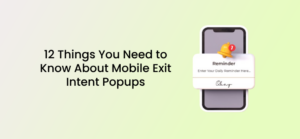More than a recognizable name and distinctive logo, a brand — your brand — encompasses how people regard you whenever and wherever they interact with your business. So, it includes impressions within and outside of your control.
Think of your brand as a person. We all have names, faces, styles, and different methods of communication, and consequently, we have different impressions of one another.
Similarly, businesses have names, logos, mission statements, products, services, and reputations that influence how they’re perceived.
Building a winning brand from the ground up is not an easy task. It requires consistency and passion in showing customers who you are and what benefits you can bring to the table.

Small business owners and entrepreneurs are faced with questions about how their brand should look, how it should make people feel, and if it will even resonate with their target audience.
Branding is all about delivering on the promises you make to your customers and making sure their mental picture of you aligns with the image you are trying to promote.
That said, here are eight steps to help you create a winning brand strategy for your small business.
Be Clear About Your Brand ‘Why’
Why do you get up every day to do what you do? What keeps you going? This is your “why.” It represents your brand’s mission and vision; in other words, the value your business provides.
To build a trusted brand, you must be able to craft a clear expression of that future, that someday, that aspirational statement that drives your company. You must visualize and project the heights your brand aspires to achieve, the tasks it aims to accomplish, and the impact it hopes to have on the environment.
It’s not just about the future, though. Your mission statement also covers your “now.” It’s an everyday commitment that guides you to accomplish a set vision.

If you thought a mission statement was not a priority, you might be mistaken. For small businesses, a mission statement goes a long way in showing potential customers the unique aspects of your business. This condensed statement describes your business’s goals and values. It doesn’t need to be fancy — just short, concise, and clear.
Confirm Your Purpose Aligns With Your Audience Values
It’s not just enough to identify your potential customers. A significant part of developing a winning brand strategy is to ensure their values align with yours.
Consumer expectations are ever rising. People make purchase decisions based on an organization’s mission and are more likely to buy goods and services from businesses that share personal values and beliefs. As a result, the need for transparency and trust is at an all-time high.

It’s not enough for you to say you’re acting in line with a specific purpose. Instead, you must conduct deep research into knowing what qualities are most important to your customers and align your brand in that direction.
You can research your customers by checking their conversations and product recommendations in forum sections relating to your niche.
Research Your Competitors
Almost every industry out there is competitive, and that’s why it becomes crucial to understand the market, especially your competitors.
You want to research a few competitor brands and take note of both what they do well and where they fail. Study how well-built their brand is. Find out their marketing channels, product or service quality.
This is not so that you can copy them word for word, though. Rather, you should use this information to sufficiently differentiate yourself and make your brand stand out from what’s already out there. The goal is to show customers why they should purchase from you over your competitors.
Identify Your UVP
Many industries have top players with bigger budgets and better resources to operate with. However, all businesses have something to offer, even the small ones.
You must understand that your products, services, and entire processes are solely yours. So, do a personal brand survey to find out your unique value proposition, that is, those unique benefits your business can provide to consumers.
Focus on these distinctive qualities to let your potential customers understand what makes your company and products better than the rest, and give them a reason to choose you over your competitors.
Perfecting your value proposition will significantly increase your conversion rate and improve your marketing across multiple channels.
Define Your Brand Personality and Voice
Your brand can’t be everything to everyone, at least not at the beginning. What you want to do is focus all your resources at first. An excellent way to achieve this is to understand your positioning statement. This one- or two-line statement can become very niche and help you stake your claim in the market.
Here’s a template you can use: We offer [product] for [target audience] to [UVP]. Unlike [the alternatives], we [mention your key differentiator].
The more specific your target market, the better. “Hikers looking to stay hydrated” or “First-time homeowners between ages 35 and 60” are great examples.
To understand your brand personality, simply think of the product or service you offer, a specific audience for this it and the uniqueness with which you provide this service.

Overall, you want to approach brand personality as you would a person. Think about what you’d want this person to be like and what qualities you’d want them to have. As you go on, this becomes the backbone on which you expand your brand.
Create Your Brand Story
Have you tried putting your startup story into words? If not, you should. For small business owners, this can be an essential aspect of brand development.
Use brand storytelling to create a more profound link with your customers by sharing information about your startup’s origins. Remember to be honest with your story and to keep it consistent with your brand.
After all, your brand story doesn’t just entail who you are and what you offer. It’s also about why people should care. It provides you an opportunity to interact with your customers on a human level.
Design Your Brand’s Visual Look
With the increasing global digitalization, brands have gone beyond simple texts. Your look is now as important. If you want to succeed, it becomes imperative that your visual branding goes hand-in-hand with all other aspects of your brand design.
Your brand colors can look nice, but they must also stand out and convey certain emotions and feelings to reinforce your branding.
Do not overlook fonts either, as they can add lots of character to your brand. Plus, there’s an unbelievable amount of them to choose from.
Last but not least is your logo. This is perhaps the most ‘iconic’ part of your visual branding. You have to make it unique, scalable, and easily identifiable. When just starting, pair your circle logos with your name to help reinforce your brand. Over time, your standalone logo will be able to speak for itself.
Promote Your Brand Where Your Audience Hangs Out
The final aspect of your branding journey is promoting it. Yes, even after you’ve checked all the points above, there’s still work to do. You need to get your brand on the screens of your target audience before your competition.
You can create various social media accounts and start posting relevant content and sparking specific conversations. You can also set up a website to link to your social media and collect email addresses. You may even kick things up a notch by investing some resources in SEO, so users can find you better.

However, you approach marketing, ensure that your brand voice and personality are always at the forefront of your campaigns.
Conclusion
Many small businesses consider brand building to be overwhelming, but it’s not. Yes, it requires consistent time and effort, but the returns can be enormous. Plus, you can approach it one point at a time.
While there’s no fixed formula to building a brand, there’s room for trial, error, and retrial until you find what clicks. That said, working with the above tips in mind will go a long way in helping you begin your brand-building journey.
Author’s Bio:
Tailor Brands is an automated AI branding platform that helps small businesses quickly create a brand identity.




